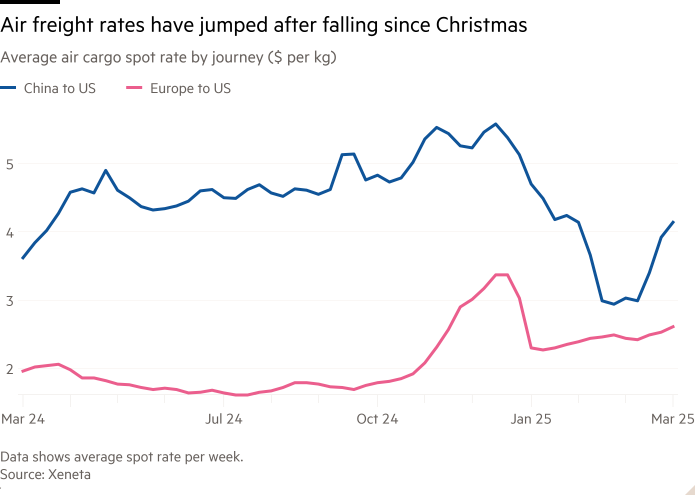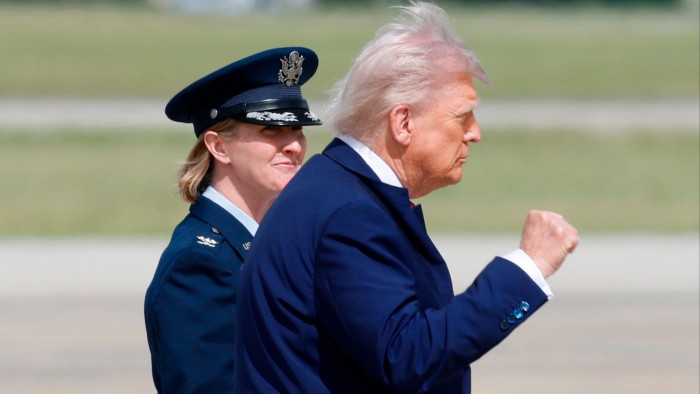Air freight costs surge as Trump tariffs trigger rush to fly in goods

Unlock the White House Watch newsletter for free
Your guide to what the 2024 US election means for Washington and the world
The cost of flying goods to the US has surged as businesses rush to get products into the country before they are hit by President Donald Trump’s sweeping tariffs.
Exporters from drugmakers to tech hardware manufacturers have been paying almost 40 per cent more to fly goods into the US from China than they were four weeks ago. Some will continue to pay a premium to import goods by air before Trump’s latest round of tariffs are enforced in the coming days, freight executives said.
But they added that the market was also bracing for a “seismic shock”, after Washington pledged to remove an exemption that excludes smaller shipments from tariffs and rigorous customs checks and has in recent years helped drive huge growth in air freight demand from Chinese online retailers.
The average cost of flying cargo from China to the US at short notice rose 37 per cent to $4.14 per kg between the first and last weeks of March, after having fallen steadily since the peak Christmas shopping period, according to the most recent data from market tracker Xeneta.
The average cost of sending goods by air from Europe to the US rose 7 per cent to $2.61 over the same period.
The growing demand for air freight, which is typically faster but pricier than shipping by sea, is the latest example of businesses taking expensive measures to minimise their exposure to Trump’s even costlier tariffs.
Freight executives have repeatedly warned that higher costs caused by Trump’s actions are likely to be passed on to consumers.
China-US air cargo spot rates are still lower than levels reached a year ago, when high volumes of exports from Chinese retailers and the Houthi militant group’s attacks on ships in the Red Sea were driving significant growth in air transport.
On what the president has dubbed “liberation day”, he on Wednesday announced new levies starting at 10 per cent on all US imports. For Chinese imports, Trump added a 34 per cent tariff on top of a 20 per cent charge imposed earlier this year.
Ahead of his announcement, “lots of companies were trying to push in more products by air than they normally would, especially over the last three weeks”, said an executive at one of the biggest global logistics groups.
This included producers of high-cost goods like European pharmaceutical companies and Asian manufacturers of data centre equipment, he added.
On Thursday, Danish shipowner and logistics group AP Møller-Maersk said it was still expecting “to see some rush airfreight orders in the US ahead of the announced tariffs going into effect”. Washington has said that its basic 10 per cent tariff will take effect on April 5, before higher taxes are enforced on April 9.
But freight handlers that are benefiting from this rush are preparing for a subsequent decline in demand from China, after Washington announced on Wednesday that its “de minimis” duty exemption for goods under $800 will be lifted once “adequate systems are in place” to collect additional taxes.
The exemption has long been used by retailers like Shein and Temu to fly goods cheaply from China to their growing US customer base, boosting airlines and freight plane operators.
“In my 30 years working in the air freight industry, I cannot remember any other unilateral trade policy decision with the potential to have such a profound impact on the market,” said Niall van de Wouw, chief air freight officer at Xeneta.
“Ecommerce has been the main driver behind air cargo demand. If you suddenly and dramatically remove the oxygen from that demand, it will cause a seismic shock.”






